The Art of the Riddle | Inception, Plato, and Jonah
Welcome back to the Bible is Art where we explore the literary artistry of the Bible and in this week we’re going to look at the art of the riddle in the movie Inception, Plato’s dialogues, and the book of Jonah.
The Bible is the greatest work of literary genius. And The Bible is Art is a YouTube Channel devoted to explaining this literary art in all its sophistication, elegance, and design.
Patreon: https://www.patreon.com/thebibleisart
website: https://www.thebibleisart.com
email: thisdivineart@gmail.com
twitter: @johnbhiggins
music: Kai Engel, "Coelum" (https://www.kai-engel.com)
| How to Learn to Read the Bible as Literary Art |
Reading Biblical Narrative: An Introductory Guide (https://amzn.to/30LzaRa)
Narrative Art in the Bible (https://amzn.to/30RVGIb)
The Art of Biblical Narrative (https://amzn.to/3aDrIfk)
Old Testament Narrative: A Guide to Interpretation (https://amzn.to/38rcE2C)
The Poetics of Biblical Narrative (https://amzn.to/2Gh4cqE)
| Literary Structure |
Literary Structure of the Old Testament (https://amzn.to/30Jdm8X)
Style And Structure In Biblical Hebrew Narrative (https://amzn.to/2RDTTlQ)
| Genesis |
Creation: The Story of Beginnings - Grossman (https://amzn.to/2GlPwq9)
Abram to Abraham: A Literary Analysis of the Abraham Narrative - Grossman (https://amzn.to/2v7id7Z)
Narrative Art in Genesis - Fokkelman (https://amzn.to/2ulmd4t)
A Commentary on the Book of Genesis (Part I) - Cassuto (https://amzn.to/2NOAhdt)
A Commentary on the Book of Genesis (Part II) - Cassuto (https://amzn.to/2Gcuk6d)
Genesis: A Commentary - Waltke (https://amzn.to/2vaBvt7)
The Gospel of Genesis: Studies in Protology and Eschatology - Gage (https://amzn.to/2RGjRFo)
Abraham and All the Families of the Earth: A Commentary on the Book of Genesis 12-50 - Janzen (https://amzn.to/2TVyCqJ)
Genesis 1-15, Volume 1 - Wenham (https://amzn.to/2TQnYRO)
Genesis 16-50, Volume 2 - Wenham (https://amzn.to/3aDY21J)
| Transcription |
Inception ends with a riddle. The movie is about dreams and reality. And each character has an object, called a totem, that works differently in the real world and in dreams. Cobb, played by Leonardo Dicaprio, has a spinning top that works normally in the real world but never stops spinning, never falls over when he’s in a dream. The top tells him what’s real and what’s fake.
Through the movie Cobb never sees his children in real life but would see him them in dreams, but only their backs, not their faces. In the last scene, Cobb enters a house and sees his children playing in the yard, they turn around and he sees their faces for the first time in the film. But before he runs to be with them, he spins the top to check that he’s in the real world. But Instead of waiting for the top to fall, he changes his mind and goes to embrace his children.
The camera then moves to the top but cuts black, ending the movie, before we see the top fall. There have been many analyses of this scene but the problem with many of them is that they focus on whether the last scene was a dream or not. And while that’s an important question, the more important question is why did Christopher Nolan choose to cut before we saw if the top would fall.
First, this is a riddle. That is, an intentionally opaque, narrative tool. Nolan designed something that would take intellectual work to figure out.
Whenever you are writing, every word, every sentence and scene can be placed on a spectrum from clarity to opacity. Authors are always choosing what things to make plain and what things to make opaque. And for skilled authors, they make those decision based on reasons, reasons that move forward the story and its main theses and themes.
For instance, if you have a man and woman and you want to communicate love between them you could write dialogue where the woman says “I love you”. A super clear communication of that affection. Or, you could write a simple glance across a table at a work lunch. Much more opaque. Or even more opaque, you could use visuals and have her wear light blue, only to find out later that that is her prospective lover’s favorite color. You may have wondered or guessed why she so frequently wore blue, but it wasn’t clear until later.
And whether you opt for one or the other for a scene or image or dialogue depends on the purposes of the plot.
Riddles are on the side closer to opaqueness, they intentionally hide. But they also invite. Riddles are particularly intriguing because they are often written to stand out, to not fit into the story, to block the regular narrative flow so that the reader or watcher will be jolted into deeper levels of thought.
So why the riddle at the end of Inception? Well, before we understand the purpose of the camera’s point of view we must understand the main character’s action. That is, Cobb spins the top but then changes his mind.
-
 5:42
5:42
thebibleisart
2 years agoThe Art of the Reverse Metaphor
139 -
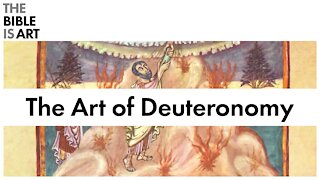 11:33
11:33
thebibleisart
2 years agoThe Art of Deuteronomy
222 -
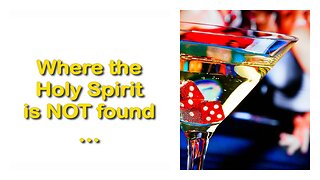 10:51
10:51
Jesus' Revelations thru Jakob Lorber English
1 year agoWhere the Holy Spirit is not found ❤️ Jesus Christ explains John 14:18
172 -
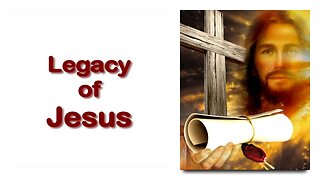 7:59
7:59
Jesus' Revelations thru Jakob Lorber English
1 year agoLegacy of Jesus Christ... He says, do as John did ❤️ Jesus explains John 19:26-27
332 -
 3:06
3:06
The Bible Corner
9 months agoGenesis Chapter 40: Dreams and Interpretations - Joseph's Gift | The Bible Corner
2 -
 10:51
10:51
News from Jesus
1 year agoOct 13, 2015 ❤️ Jesus Christ says... Each of you is My unique Masterpiece
58 -
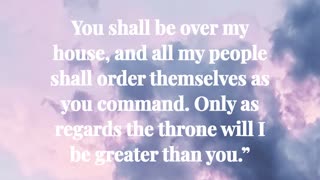 7:46
7:46
The Bible Corner
9 months agoGenesis Chapter 41: Pharaoh's Dreams and Joseph's Rise | The Bible Corner
13 -
 10:24
10:24
Prepare For The Apocalypse
1 year agoThe Days of Noah have Arrived (Luke 17:26-27)
158 -
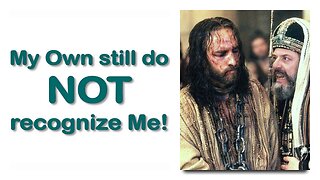 10:16
10:16
Jesus' Revelations thru Jakob Lorber English
1 year agoMy Own still do not recognize Me! ❤️ Jesus explains John 1:11 and 19:22
192 -
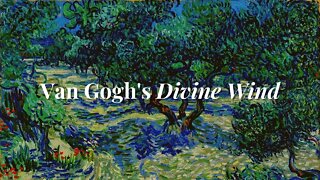 10:10
10:10
Empire of the Mind
3 years agoAnalyzing Van Gogh’s OLIVE ORCHARDS | Consciousness, Perception, Visual Meaning | Understanding Art
191